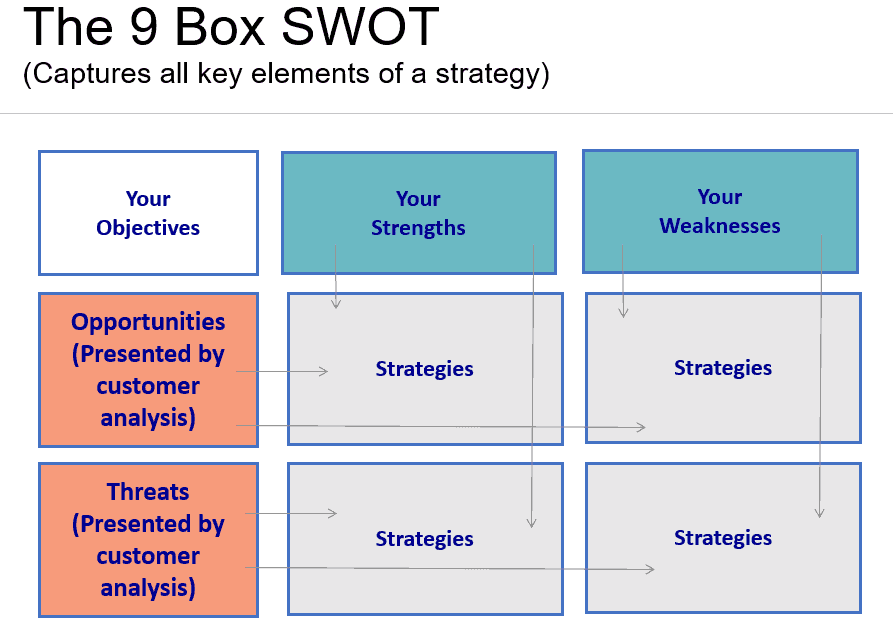Roll back to the middle of 2020 and most plans – both personal and business – were aimed at ‘getting back to normal’. In the middle of our Covid 19 response we were ‘locked down’ to varying degrees around the world and wondering what life would be like in the future.
The future is now here, and we know what it’s like: not normal, not 2019, and it won’t be either.
Our response to today’s situation therefore is to look at how the world – and our world – has changed, and then decide what we are going to do about it. In other words, create a plan.
The classic business planning and strategy tools still have their place. They are just tools, so we can use them as we feel fit. The common element though is not just what we populate these tools with, but where we go afterwards.
For viewing the world and our environment a PESTLE Analysis provides a comprehensive structure. While we talk on Zoom about the effects of Brexit, Covid, Ukraine, Inflation, compliance and climate change and whatever else is on our phones (technology!), we can classify these themes – and more – using the headings:
Political
Economical
Social
Technological
Legal
Environmental
Two tips here: don’t spend too long capturing everything, there is a potential black hole of time to be lost just talking about the issues.
Secondly and more importantly, once collated ask the key question – “So What?”. As in – what impact do these issues have for us – and how could we respond?
Shorter planning cycles can be a bit like driving through fog – your headlights illuminate just enough to enable you to move forward, and then illuminate the next part of the journey.
It is this second point which transforms the use of PESTLE from whiteboard to action, so this is where the emphasis of discussion should be focused.
From the bigger picture of the world as it now is, drill down to your world and your market, using Michael Porter’s Five Forces model. Consider how you are working with your customers and suppliers and the power in todays – and what you anticipate being tomorrows – marketplace. Analyse too the potential other market entrants and substitutes. An obvious substitute for me is online training delivery instead of ‘classroom’, one effect being that people really want a great experience now if they are going to travel and sit inside alongside other people. (I have my planned response in hand!)
Again the ‘So What?’ question is crucial – look for what you do about your conclusions, not just your analysis of how things are.
Then the most commonly used – and in my experience misused – tool, SWOT. In 2022 you will be talking about your Strengths, Weaknesses, Opportunities, and Threats probably most days. But are you viewing them in a structured way, and especially looking for the action points? A key adaption of this tool is the 9 Box version, which enables you to consider your strategies in response to the relationships between Strengths and Opportunities & Threats, and Weaknesses and Opportunities & Threats too. This is what helps with the answers to that ‘So What?’ question.
Sweeping all these ‘so what responses ‘together should enable you to then consider your overall direction and strategy – where you want to be: what I categorise as Vision. Go for the pithy “put a Coke within an arm’s reach of everyone” (your version of it!) if you can, but avoid boilerplate, vague aims. It matters less what you state your vision to be than how much your people engage in going in that direction, so ask them.
The tool I usually use to create the plan itself is Kaplan & Norton’s Balanced Business Scorecard. It’s been around over 30 years now, so there is plenty of experience in its use. It has also been adapted into steering wheels, maps, and other shapes, so you don’t have to use their 4 headings of Customers, Finance, Processes and People too rigidly: indeed Kaplan & Norton didn’t originally used exactly those words.
What you are aiming for with a scorecard approach is to set objectives in each area, then agree how you measure success for each one. Measures can be qualitative as well as quantitative, it doesn’t have to be just numbers. But we ‘measure what we treasure’ so this leads us to setting targets, giving you Key Performance Indicators. With those established, it’s the fun bit: action. What must be done to achieve the targets, which will fulfil the objectives and take you in the direction of the vision? There is plenty to be done, and some project planning tools or Gantt chart could set out how you plan your actions – and progress. You cannot do everything in the next week, so pace yourself and your team, with some quick wins early on.
This is the middle of the year, so one other tip. Who says you must plan for 12 months? You may feel that in the light of everything you have identified in your environment through PESTLE and your market through the Five Forces that you have a mountain to climb.
Identify the main actions you need for the next 6 months, maybe even 3 months. You can always add more actions when you review progress. A monthly progress review can easily add actions for say a 7th month, giving you a rolling 6 month plan. Shorter planning cycles can be a bit like driving through fog – your headlights illuminate just enough to enable you to move forward, and then illuminate the next part of the journey.
We didn’t aim to have 2022 like this, the chances are 2023 will not be exactly as want either. Yet you can have a plan for where you want to go and what you want to be, to help you adjust your response to the inevitable periods of turbulence ahead.






